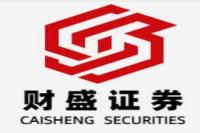Unlocking SOE Value: A Deep Dive into China's New State-Owned Enterprise (SOE) Market Value Management Guidelines
Meta Description: China's new SOE market value management guidelines aim to boost SOE listed company value through enhanced corporate governance, equity incentives, and strategic mergers & acquisitions (M&A). Learn about the six key tools and implications for investors. #SOE #MarketValueManagement #China #EquityIncentives #MergersAndAcquisitions #StateOwnedEnterprise
Wow, buckle up, folks! The Chinese government just dropped a bombshell – new guidelines designed to supercharge the market value of its state-owned enterprises (SOEs). This isn't just another policy document gathering dust on a shelf; it's a game-changer, a masterstroke aimed at revitalizing the nation's economic engine and delivering serious returns to investors. Forget those yawn-inducing reports – this is a thrilling narrative of strategic maneuvering, bold reforms, and the potential for massive growth. We're talking about a comprehensive overhaul, a complete revamp of how China approaches the value of its crown jewels – its SOEs. This isn't just about numbers on a spreadsheet; it's about unlocking the potential of countless businesses, fostering innovation, and creating a brighter future for millions. Prepare to dive deep into the details, the nuances, the implications, and the exciting possibilities this new policy unveils. We'll decode the jargon, dissect the strategies, and explore the potential impact on the global economy. Get ready to understand the intricacies of this pivotal shift in Chinese economic policy and what it means for you, whether you're a seasoned investor or just starting to explore the world of finance. This is more than just an analysis; it's a journey into the heart of China's ambitious economic future. This is a story of transformation, opportunity, and the unwavering pursuit of economic excellence.
Seed Keyword: State-Owned Enterprise (SOE) Market Value Management
The recent release of the “Several Opinions on Improving and Strengthening the Market Value Management of Central Enterprises’ Controlling Listed Companies” by China's State-owned Assets Supervision and Administration Commission (SASAC) marks a significant shift in how the country approaches the valuation of its SOEs. This isn’t your grandpappy’s state-run enterprise model, folks. We're talking about a proactive, market-driven approach designed to maximize shareholder value while ensuring long-term sustainability. Think of it as a comprehensive toolkit, a carefully crafted strategy designed to boost the performance of these crucial companies. The document, released on December 17th, outlines a nine-point plan targeting a significant improvement in the market valuation of listed companies controlled by central SOEs. This isn't just window dressing; it's a direct response to market demands and a signal of the government’s commitment to a more transparent and efficient financial system.
The core objective? To enhance the investment value of these SOEs and, ultimately, deliver strong returns to investors. This involves a multifaceted approach, incorporating both traditional strategies and some innovative new ones. SASAC is serious about this; they're treating it as a long-term strategic imperative, not just a quick fix.
Six Powerful Tools for SOE Market Value Enhancement
The guidelines lay out six key tools for improving SOE market value:
-
Strategic M&A: This isn’t just about buying up any old company. The focus is firmly on strategic acquisitions that bolster the core competencies of the SOEs, driving innovation and enhancing competitiveness. The government is encouraging mergers and acquisitions within strategic emerging industries, while also supporting consolidation in traditional sectors to improve efficiency and boost market share. But there's a caveat: blind expansion is discouraged. The emphasis is on quality over quantity, avoiding those deals that could damage financial health or reduce operational efficiency.
-
Enhanced Corporate Governance: Good governance is the bedrock of any successful company. The guidelines highlight the importance of improving corporate governance structures within SOEs, promoting transparency, accountability, and market-oriented decision-making. This signals a clear push towards international best practices, instilling confidence in investors and attracting foreign capital.
-
Equity Incentive Schemes: To incentivize performance and attract top talent, the guidelines emphasize the importance of well-structured equity incentive programs. This is a move toward greater alignment between management and shareholder interests, aligning the incentives for executives with the goals of the company. It’s a clever way to ensure that managers are just as invested in the success of the company as shareholders are.
-
Improved Information Disclosure: Transparency is key to building trust. The guidelines push for improved information disclosure, enhanced ESG (environmental, social, and governance) reporting, and proactive management of public perception. This will not only boost investor confidence but also help to build a more positive brand image for these crucial companies.
-
Enhanced Investor Communication: Keeping investors in the loop is crucial. The guidelines stress the importance of regular and open communication with investors, ensuring that they are well-informed about the company's performance, strategy, and future prospects. This proactive approach will foster better understanding and drive greater market acceptance.
-
Increased Shareholder Returns: Finally, the guidelines emphasize the need to prioritize shareholder returns through increased dividends, optimized dividend payouts, and a greater focus on returning profits to those who invested in the company. This is a resounding statement about the government's commitment to maximizing shareholder value and making these companies attractive investment destinations.
The "One Company, One Strategy" Approach
This isn't a one-size-fits-all plan. The guidelines emphasize a "one company, one strategy" approach, requiring each SOE to develop a tailored plan according to its specific circumstances and industry. This personalized approach ensures that the strategies are relevant and effective for each company. This level of customization shows a deep understanding of the diverse nature of these enterprises and a commitment to effective, targeted growth strategies.
Addressing the Long-Standing Issue of "Below-Net-Asset-Value" (PNAV) Companies
Many SOEs have been struggling with the persistent problem of trading below their net asset value (PNAV). The new guidelines explicitly address this issue, calling for the establishment of a regularized stock repurchase and increase mechanism to actively tackle this problem. This direct approach signals a serious commitment to addressing this long-standing challenge and improving the market perception of these companies.
Market Reaction and Expert Opinions
The announcement has been met with cautious optimism among market analysts. Experts highlight the strategic importance of the guidelines, emphasizing the potential for significant value creation through enhanced corporate governance, increased investor returns, and strategic acquisitions. However, the success of this initiative will depend on effective implementation and the commitment of all stakeholders. The analysts also point out that the policy's success hinges on its implementation, urging proactive measures and consistent monitoring to ensure that the goals are met.
Long-Term Implications and the Road Ahead
This is not a short-term fix; it’s a long-term strategic initiative. The aim is to create a more robust and competitive SOE sector capable of playing a significant role in China's future economic growth. The government's commitment to incorporating market value management into the performance evaluation of SOE executives emphasizes the seriousness of this initiative. It signals a clear intention to align incentives and drive performance improvements.
The successful implementation of these guidelines holds significant implications, not only for the Chinese economy but also for global investors. It represents a significant step toward a more market-oriented and efficient SOE sector, potentially unlocking substantial value and attracting further foreign investment. This could lead to increased competition, innovation, and ultimately, a stronger Chinese economy.
Frequently Asked Questions (FAQs)
Q1: What are the primary goals of the new SOE market value management guidelines?
A1: The primary goals are to improve the investment value of central enterprises' controlling listed companies, enhance investor returns, and contribute to the high-quality development of the capital market. This involves boosting competitiveness, fostering innovation, and ensuring long-term sustainability.
Q2: How will the guidelines impact investor returns?
A2: The guidelines aim to directly improve investor returns through increased dividends, optimized dividend payouts, and potentially higher stock prices due to improved corporate governance, increased transparency, and strategic acquisitions.
Q3: What are the key tools outlined in the guidelines?
A3: The six key tools are strategic mergers and acquisitions (M&A), enhanced corporate governance, equity incentive schemes, improved information disclosure, enhanced investor communication, and increased shareholder returns.
Q4: How will the "one company, one strategy" approach work?
A4: This approach recognizes that each SOE is unique. The guidelines require each company to develop a tailored market value management plan based on its specific circumstances and industry, ensuring a precise and effective strategy for each.
Q5: How will the government ensure the guidelines are effectively implemented?
A5: The government is incorporating market value management into the performance evaluation of SOE executives, providing a strong incentive for implementation and ensuring accountability. Regular monitoring and evaluation will also play a crucial role.
Q6: What are the potential long-term implications of these guidelines?
A6: The successful implementation of these guidelines could lead to a more efficient and competitive SOE sector, attracting more foreign investment, boosting innovation, and contributing significantly to China's economic growth. It also signifies a broader shift towards a more market-oriented economic system within China.
Conclusion
China's new SOE market value management guidelines represent a bold and ambitious initiative with the potential to reshape the landscape of its state-owned enterprises. By focusing on a multi-pronged strategy incorporating modern management practices, increased transparency, and a strong emphasis on shareholder value, the government demonstrates a commitment to fostering a more dynamic, efficient, and globally competitive SOE sector. While the success of these guidelines will depend on effective implementation and adherence to the outlined principles, the potential for positive change is immense. The future looks bright for China's SOEs, and savvy investors should be paying close attention. This isn't just about numbers—it's about the future of China's economic engine.



